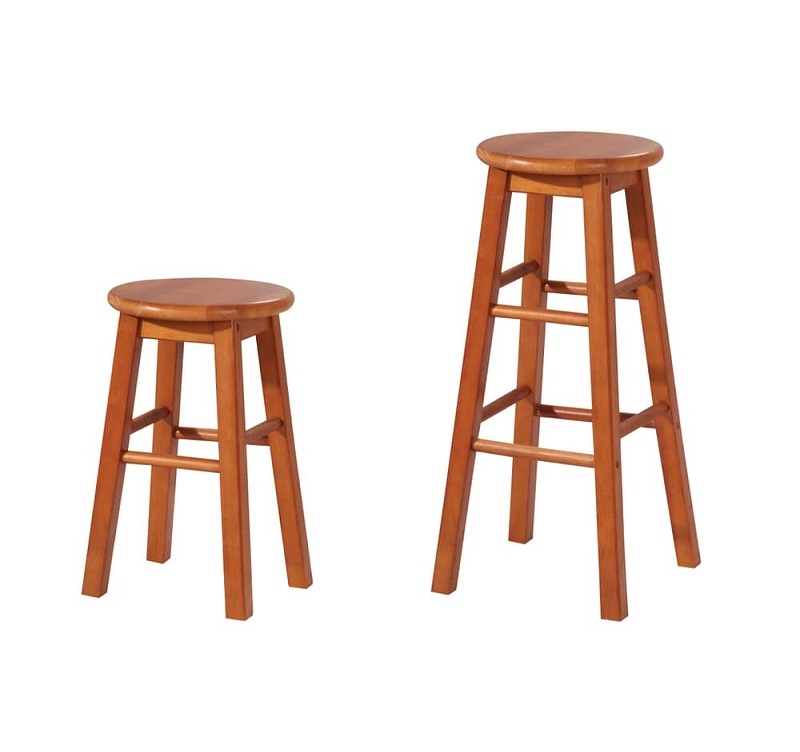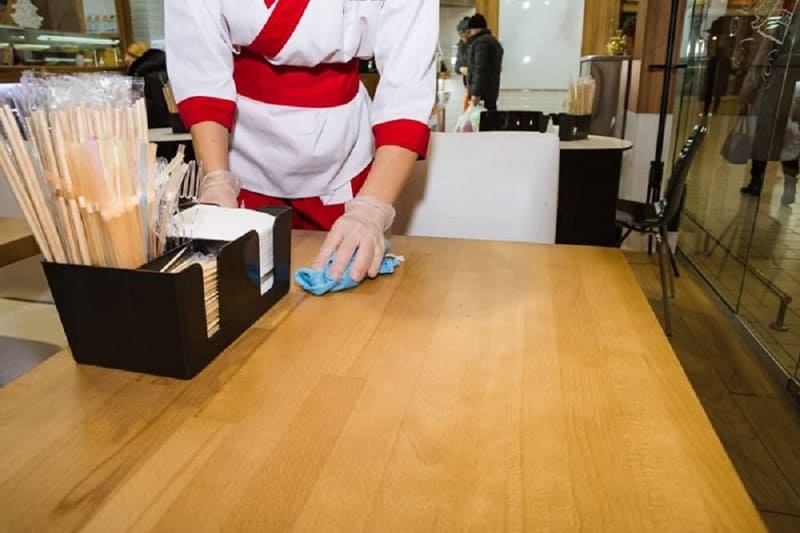What is a Bar Stool?
Bar Stool is a versatile seating option that works amazingly well in commercial restaurants. These elevated chairs offer several benefits for businesses. They maximize seating capacity by utilizing vertical space, allowing restaurants to accommodate more customers. Restaurant Bar stools also encourage a vibrant and social atmosphere, perfect for bars and casual dining settings. With their durability, style, and space-saving design, bar stools are an essential asset for any restaurant seeking to optimize its commercial potential.
What Is A Counter Height Bar Stool?
Counter Height Bar Stool is a type of seating specifically designed to match the counter height surfaces or tables. With their elevated design, they allow guests to easily dine, chat, and enjoy their meals at counter-height surfaces, enhancing the overall dining experience and maximizing the space utilization in restaurants. It is uncommon for a restaurant to use counter height surfaces or barstools, usually opting for standard bar height counters and stools.
Factors to Consider While Choosing Bar Stools vs Counter Stools:
When selecting the perfect restaurant bar stool, understanding the differences between counter height and bar height is essential. Additionally, considering factors such as comfort, ergonomics, aesthetics, materials, maintenance, and price differences is crucial. Let’s dive in.
Restaurant Bar Height vs Counter Height:
Before discussing the factors to consider when choosing the right stool for your restaurant, you need to have a clear idea about bar height vs counter height.
Bar stools and counter stools vary in height. Bar stools are taller, designed for elevated bars or counters. The usual measurement for bar stools is 40 to 42 inches (102 to 107 cm). Counter stools are shorter. They can be from 36 to 39 inches (91 to 99 cm) in height.

In a commercial restaurant setting, bar height stools are ideal for creating a lively and social atmosphere, perfect for bars and entertainment areas. Counter height stools, on the other hand, can sometimes be more comfortable for shorter individuals and children.
Now let’s talk about the key things to consider while choosing the right stool for your restaurant:
Comfort and Ergonomics:
Considering comfort and ergonomics is crucial for restaurant owners when selecting between bar stools and counter stools. Comfortable seating enhances the dining experience, encourages longer stays, and boosts customer satisfaction. Ergonomic design promotes proper posture, reducing discomfort and potential health issues for patrons. Restaurant Bar stools are equipped with a footrest that offers support for feet and legs. Counter stools are specifically designed to provide comfortable seating at a reduced height. Prioritizing these factors ensures a positive and enjoyable experience for customers.
Aesthetic Appeal:
Stools contribute to the overall aesthetic of the space. Both bar stools and counter stools boast aesthetic appeal in their own distinct ways. Consider the style, design, and color that will complement the surrounding decor. Matching or contrasting materials, finishes, and upholstery can enhance the visual appeal of the stools.
Materials:
Stool materials play a significant role in durability, maintenance, and aesthetic appeal for your restaurant. Both bar stools and counter stools are usually made of various materials, such as wood, metal, plastic, and upholstery. Choosing high-quality and suitable materials ensures that the stools maintain their appearance and functionality even with frequent use in a commercial environment.
Maintenance and Care:
Restaurant owners should prioritize the factor of maintenance and care when selecting stools. With the high traffic and frequent use in a commercial setting, stools are prone to spills, stains, and wear. Opting for stools that are easy to clean, resistant to stains, and require minimal upkeep can save time and effort in the long run. Considering maintenance and care factors while choosing between bar stools and counter stools will ensure that the stools remain in excellent condition, preserving their appearance and functionality for an extended period, ultimately reducing replacement costs.

Pricing:
The pricing of bar stools and counter stools varies based on factors such as materials, design, and brand. Restaurant bar stools generally command higher prices than counter stools due to their larger size. Set a budget and explore options within that range, considering the desired features and quality. Compare prices from different retailers to ensure a fair deal.
By considering these factors, you can make an informed decision when choosing between bar stools and counter stools.
Final thoughts
The choice of bar stools vs counter stools depends on the specific needs of your space. Consider the height requirements, comfort, aesthetics, materials, maintenance, and budget to make an informed decision. Prioritize customer comfort and create a welcoming ambiance. Opt for durable materials, ergonomic designs, and easy-to-clean options. Strike a balance between functionality and style to enhance the overall dining experience. Ultimately, choosing the right stool for your restaurant will contribute to customer satisfaction and the success of your establishment.
FAQs
The difference between counter height and bar height is their respective heights. Counter height typically ranges from 36 to 39 inches (91 to 99 cm), while bar height ranges from 40 to 42 inches (102 to 107 cm). This variation ensures that the stools are proportionate to the height of the counter or bar they are intended for.
The recommended space between the stool and counter is around 10 to 12 inches (25 to 30 cm). This space allows for comfortable seating, legroom, and easy movement in and out of the stool. It is important to consider this measurement to ensure a pleasant and ergonomic seating experience.
The number of barstools needed for a restaurant depends on several factors, such as the size of the space, seating layout, and capacity requirements. As a general guideline, a common rule of thumb is to allocate around 18 to 24 inches (46 to 61 cm) of counter space per stool. This measurement allows for comfortable seating and ensures sufficient spacing between stools for ease of movement. Consider the available space and desired seating capacity to determine the appropriate quantity of bar stools for your restaurant.

